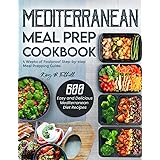As the new year approaches, many of us find ourselves reflecting on health goals, often leading to ambitious, yet sometimes unsustainable, weight loss diets. However, as the video above with Abbey Sharp highlights, focusing on gentle, evidence-based healthy behavior changes is far more effective than resorting to extreme diets that often fail by Valentine’s Day. This approach prioritizes controllable behaviors over the fluctuating numbers on a scale, paving the way for sustainable weight management and improved overall health. It’s about integrating actionable habits into your daily life that naturally support your well-being, rather than imposing harsh restrictions.
Instead of chasing an elusive target weight, which can be inconsistent and frustrating, we can empower ourselves by adopting nutrition habits that are within our direct influence. The journey to better health doesn’t require a complete overhaul; rather, it thrives on small, consistent steps. By implementing smart, gentle nutrition habits, you can cultivate a healthier relationship with food and your body, leading to lasting positive change without the typical deprivation associated with dieting.
Prioritize Protein for Lasting Satiety and Metabolism
One of the most impactful shifts you can make in your diet is to ensure adequate protein intake at every meal and most snacks. Protein is often dubbed “king” in the hierarchy of satiety, meaning it keeps you feeling fuller for longer compared to carbohydrates or fats. This isn’t just about curbing hunger; it’s a strategic move for your metabolism and long-term health. Maintaining lean muscle mass is crucial as we age, directly influencing our metabolic rate and supporting healthy weight management.
When you’re aiming to manage your weight or are in a calorie deficit, the importance of protein becomes even more pronounced. Research has shown a significant impact: people spontaneously consumed approximately 400 fewer calories per day when their protein intake increased from 15% to 30% of their total daily calories. This is a substantial reduction achieved without conscious restriction, simply by optimizing macronutrient distribution. To maximize muscle protein synthesis, aim for around 20 to 35 grams of protein per meal or snack. This practical approach helps stabilize blood sugar levels, provides consistent energy, and increases your chances of achieving sustainable weight management without feeling deprived or experiencing scarcity.
Combat Distracted Eating with “No Phones at Mealtime”
In our hyper-connected world, distractions during meals are rampant. While strict rules can sometimes feel counterproductive, implementing a “no phones at mealtime” policy is one that genuinely supports mindful eating and can significantly impact your consumption habits. It’s challenging, of course; many of us, myself included, find ourselves struggling to consistently adhere to this, achieving success maybe 50% of the time. Yet, even partial success in this area can yield impressive results.
Studies indicate that eating while engrossed in your phone can lead to an increase in caloric consumption by about 15%. This phenomenon occurs because when our attention is fragmented, we fail to register the emotional and sensual satisfaction of our food. We miss crucial internal cues of hunger and fullness, making it difficult for our bodies to signal when we’ve had enough. By putting away phones, tablets, and TVs during meals, you reclaim the experience of eating. This simple act not only fosters better self-awareness around food but also enhances the social benefits of shared meals, transforming an often-mindless activity into a truly nourishing one.
Enhance Refined Carbs with Fiber-Rich Vegetables
Instead of the common advice to “cut down” on refined carbohydrates, a more sustainable and fulfilling approach is to “bulk up” and “stretch” them with fiber-rich vegetables. This additive strategy doesn’t strip your plate of beloved carbs; rather, it elevates their nutritional profile and satiety factor. For instance, incorporating zucchini ribbons into your pasta or finely dicing vegetables like carrots, bell peppers, or mushrooms into your rice instantly boosts fiber content.
This technique adds layers of flavor, texture, and most importantly, volume to your meals. A low-fiber, less nutrient-dense dish transforms into one that is far more satiating and beneficial for your digestive system. Even if you maintain your usual portion of rice or pasta, the added fiber from the vegetables provides bulk, which naturally promotes a feeling of fullness. This means you may find yourself naturally needing less of the refined carb component, supporting weight management without a feeling of restriction. This synergy of carbs and fiber is a cornerstone of effective gentle nutrition habits.
Strategic Fat Choices: Opt for Whole Food Sources
When it comes to fats, the goal isn’t to eliminate them, but to choose them with purpose. Fats are an essential component of the Hunger Crushing Combo (HCC) — alongside protein and fiber — and play a vital role in satiety and nutrient absorption. While healthy oils are valuable for cooking and dressing, consider prioritizing whole food fat sources that offer multiple benefits, essentially holding “dual HCC citizenship” by providing fat alongside fiber or protein.
Consider the mighty avocado: a single one boasts around 22 grams of satiating fats, 3 grams of protein, and a remarkable 10 grams of fiber. Compare this to an equivalent amount of fat from oil, and you immediately see the superior satiety and nutritional advantages. Similarly, whole peanuts provide approximately 14 grams of fats, 7.5 grams of protein, and 2.5 grams of fiber. These whole food options deliver more volume, complex flavor, and a broader spectrum of hunger-crushing compounds. Incorporate avocado as a sandwich spread, or use nuts and nut butters as bases for dressings and sauces. This method ensures you get the benefits of healthy fats while simultaneously boosting your intake of other crucial macronutrients.
Hydrate Smart: The Morning Water Ritual
After hours of sleep, your body is in a state of natural dehydration. Capitalizing on this morning thirst with a simple hydration ritual can significantly impact your overall health and energy levels. Integrate drinking water into your established morning routine, especially if coffee is a daily fixture. The moment you wake up, before even checking your phone, drink a full glass of water. Then, as your coffee brews or your tea steeps, consume another glass.
This consistent intake of water immediately upon waking is crucial for several physiological functions. It supports regularity, helps reduce bloating, aids in weight management, boosts energy and metabolism, enhances cognitive performance, and even improves joint mobility. While enjoying coffee on an empty stomach is generally fine unless it causes stomach upset or anxiety, pairing it with substantial water intake ensures you’re replenishing your body’s fluids effectively from the get-go. This simple, yet powerful, habit sets a positive tone for the entire day, promoting better physical and mental function.
Master Your Sleep: Limit Phone Use Before Bed
Restorative sleep is a cornerstone of good health, yet many of us inadvertently sabotage it with late-night screen time. The blue light emitted from phones, tablets, and computers significantly interferes with our circadian rhythms, disrupting the natural sleep-wake cycle. Poor sleep, in turn, has a cascade of negative effects: it impacts appetite regulation, intensifies food cravings, affects blood sugar levels, contributes to weight gain, impairs cognition and attention, and weakens immune defenses.
To reclaim your sleep, consider implementing “parental lock” functions on your own devices to limit social media or app access before bed. Many apps are designed to help you set these boundaries, effectively locking you out after a certain time. This strategy might feel like “parenting yourself,” but it’s an incredibly effective way to ensure you prioritize quality sleep over mindless scrolling. The health benefits of restorative sleep far outweigh the fleeting entertainment of screens, offering profound improvements in energy, mood, and overall well-being.
Integrate Movement: Walking Meetings and Calls
Exercise doesn’t always have to be a high-intensity, sweaty gym session to be effective. In fact, framing movement as fun or leisurely, rather than a chore, can make you less likely to compensate with extra food later. A brilliant way to weave more physical activity into your day, especially if you have a busy schedule, is to take calls or virtual meetings while walking.
Next time you have a lengthy Zoom conference call where your camera isn’t required, grab your earbuds and take a stroll through your neighborhood. Similarly, instead of passively waiting on hold with customer service, head outdoors. This gentle movement, combined with fresh air, not only burns a few extra calories but can also enhance concentration, particularly beneficial for individuals with ADHD who often find movement helps focus. The best part? This strategy seamlessly integrates physical activity into your existing commitments, meaning it doesn’t “eat into” your already packed day. It’s a subtle yet powerful shift towards a more active lifestyle, contributing to better circulation, mood, and overall health.
Boost Nutrient Diversity: Vary Your Fruits and Vegetables
Variety in your diet is paramount for meeting all your nutrient needs and fostering a thriving gut microbiome. Our gut bacteria flourish on diverse food sources, which in turn supports overall health, immunity, and even mood. However, with the rising cost of fresh produce, eating a wide array of fruits and vegetables every single day can feel daunting.
A simple yet effective strategy is to intentionally switch up the varieties of fruits and vegetables you purchase each week. If this week’s staples are apples and broccoli, next week, opt for kiwis and cauliflower. If spinach graces your salads one week, rotate to kale or mixed greens the next. This rotational approach not only prevents “healthy eating recipe ruts,” which can lead to boredom and abandonment of healthy habits, but also ensures a greater spectrum of vitamins, minerals, and phytonutrients over time. By consciously diversifying your produce choices, you empower your body with a broader range of essential compounds without significantly increasing your grocery bill.
Streamline Mornings: Rotate Mindless Breakfasts
Mornings are often chaotic, and for most people, the mental energy to craft a fancy, new breakfast recipe daily simply isn’t there. This lack of planning can lead to quick, less nutritious choices like a sugary pastry or a bacon sandwich, which offer little in terms of sustained energy or satiety. A smarter approach is to establish three simple, protein-rich breakfast concepts that you can rotate through, always ensuring you have the ingredients on hand.
As Abbey Sharp mentions in the video, a protein-rich breakfast can significantly reduce appetite throughout the day and lead to fewer calories consumed at subsequent meals. Think protein oatmeal, a protein smoothie bowl, or a cottage cheese/yogurt parfait. The trick is to keep the base simple and always available, then vary the toppings. Incorporate different fruits, nuts, seeds, berries, or even a sprinkle of high-fiber cereal to keep things interesting. For those who enjoy a nostalgic sugary cereal, a clever hack is to mix it with a high-fiber, whole-grain cereal like bran flakes or morning oats. This way, you get the satisfying flavor without the sugar crash, benefiting from the added fiber and reducing the overall sugar impact. This balanced approach supports consistent energy levels and stable blood sugar, preventing mid-morning slumps and unhealthy cravings.
Natural Sweetness: Experiment with Fruit
While there’s no need to completely banish honey from your oatmeal or sugar from your baked goods, don’t underestimate the natural sweetness, flavor, and nutritional benefits that fruit can provide. Integrating ripe fruit as a sweetener is a fantastic way to enhance dishes while adding fiber, vitamins, and antioxidants. This aligns perfectly with an additive approach to nutrition, where you enhance rather than restrict.
For instance, ripe mashed banana works wonders in oatmeal, yogurt, and various baked goods, naturally reducing the need for added sugars like brown sugar. Freeze-dried berries, whether ground into a powder or used whole, contribute intense flavor, a boost of antioxidants, and natural sweetness. By adding a ripe banana to your oatmeal, you’re not just cutting back on refined sugar; you’re also adding volume and a wealth of satiating nutrients that keep you feeling fuller for longer. This simple swap elevates the nutritional value of your meals and snacks, satisfying your sweet tooth in a wholesome way.
Mindful Consumption: Two Sips of Water Per Sip of Alcohol
Alcohol consumption, while a source of joy for many, can have immediate and long-term negative health consequences, from disrupted sleep and dehydration to increased calorie intake and lowered inhibitions that lead to overeating. Current guidelines suggest limiting alcohol to two drinks per week, and no more than two drinks per sitting if you drink more frequently. To adhere to these recommendations and mitigate unpleasant after-effects like hangovers, a practical strategy is to drink two sips of water in between every single sip of alcohol.
This simple habit achieves several goals: it naturally slows down your alcohol consumption, helping to prevent overconsumption. More importantly, it ensures you stay adequately hydrated throughout the evening, significantly reducing the severity of dehydration-related symptoms like headaches, constipation, bloating, and puffiness. By intentionally pacing yourself with water, you can enjoy an occasional drink responsibly, minimize negative impacts, and make more balanced choices, aligning your social habits with your overall health goals for sustainable weight management and well-being.
Dining Out Smart: Start with a Vegetable-Based Appetizer
Dining out often presents a challenge to healthy eating habits, with rich foods and larger portions tempting us. However, a strategic approach can help you navigate restaurant menus mindfully. Always starting your meal with a vegetable-based appetizer or salad is a highly effective, evidence-based habit. Research indicates that beginning a meal with a salad can reduce the total caloric intake of the meal by approximately 12%. But the benefits extend beyond calorie reduction.
This practice primarily encourages a crucial increase in fiber intake, which is often lacking in restaurant cuisine. Fiber is essential for counteracting the digestion-slowing effects of excess sugars, fats, and alcohol commonly found in restaurant dishes. Additionally, this habit helps to dismantle the “all-or-nothing” mentality that many people develop after years of restrictive dieting. Instead of feeling the need to indulge in every rich item because “the diet starts tomorrow,” starting with something nutritious like a salad immediately shifts your mindset. It empowers you to make more balanced choices for your main course that truly satisfy your cravings while still feeling good in your body, rather than succumbing to guilt or regret.
Efficient Meal Prep: Focus on Building Blocks
Meal prep is often touted as a cornerstone of healthy eating, but its rigidity can quickly lead to boredom and abandonment. Eating the exact same pre-made lunch every day can be monotonous, increasing the likelihood of forgetting your packed meal and opting for less healthy takeout. The solution lies in a more flexible approach: batch prepping meal building blocks rather than complete recipes.
Instead of preparing full meals, dedicate time to cooking larger quantities of individual components. Grill a generous amount of chicken breast or tofu, cook a big pot of quinoa or rice, and pan-roast a couple of different types of vegetables. With these versatile building blocks ready, you can easily assemble a variety of meals throughout the week: create fresh salads, build hearty sandwiches, add them to soups, stir-fries, grain bowls, or even tacos. This method provides the convenience of meal prep without the dietary fatigue, ensuring your healthy eating efforts remain exciting, adaptable, and ultimately, sustainable.
Visible Nutrition: Clear Containers at Eye Level
Our food choices are heavily influenced by convenience and what’s immediately visible. To make nutritious foods the easiest and most intuitive option, we need to apply a bit of “marketing” to our own refrigerators. Dedicate about 30 minutes on grocery day to wash and chop all your produce. Then, store these pre-prepped fruits and vegetables in clear glass containers.
The crucial next step is placement: position these containers at eye level in your fridge, front and center, rather than tucked away behind other items. This strategic visibility ensures that when you arrive home hungry after a long day, those vibrant, ready-to-eat fruits and vegetables are the first thing you see. This simple visual cue makes them the path of least resistance, significantly increasing the likelihood that you’ll reach for a healthy snack rather than something less nourishing. It’s a powerful psychological hack that transforms convenience into a driver for better food choices.
The Green Boost: Adding Leafy Greens to Leftovers
For an effortless nutritional upgrade to any meal, consider a bonus tip that adds volume, fiber, and nutrients with minimal effort. Whenever you reheat leftovers, whether homemade or from a restaurant, toss a handful or two of spinach or other leafy greens, along with a pinch of salt, into the bottom of the bowl. As your meal reheats, the greens will wilt beautifully, absorbing the flavors and seasonings of your dish.
This simple addition boosts the fiber content, which contributes to increased satiety, and provides a spectrum of vitamins and minerals. The greens become a seamless part of the meal, enhancing its nutritional profile without altering its core flavor profile. It’s an ingenious way to sneak more vegetables into your diet, transforming an ordinary leftover into a more substantial and health-supportive meal. This approach embodies the spirit of gentle nutrition habits, making healthy eating accessible and delicious without demanding extensive culinary skills or time.











